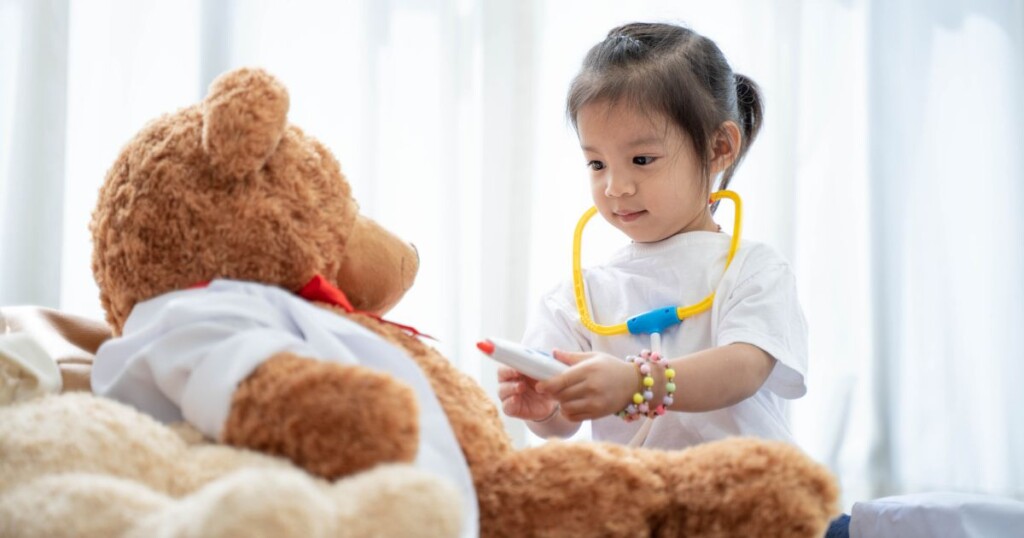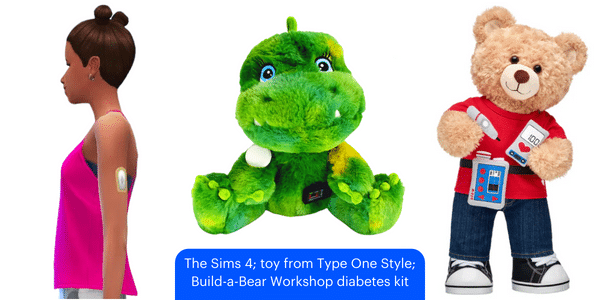Play and your child who lives with type 1 diabetes

From a very young age, children learn about the world and how to interact with others through play. Play is vital to healthy brain development and helps children build their physical, mental and emotional strength.
Of course, when a child is diagnosed with type 1 diabetes (T1D) at a young age, it’s a huge adjustment for the whole family. The process of diagnosis and adapting to new routines will become a huge part of your family’s focus. But it’s important to remember that your child will still want to play, and it’s a good idea if you can still prioritise that kind of interaction with them.
Not only is play a key part of child development, it’s also an effective way for kids to process a huge life change, like a T1D diagnosis. Here are a few ways to encourage play, and top toys for kids living with T1D.
Imagination and role play
Children often process things that happen in life, big and small, through play. Some children do this through role playing; they might use their toys or dolls to reenact their own personal experiences. Encourage this in your child, as it will help them process their experiences and changes in lifestyle.
Your child might like to role play what happened to them in hospital or at diagnosis, as well as their diabetes management moving forward. You might like to add a toy doctor’s kit or some unused diabetes supplies (no sharps) for older children to use as part of their imagination play.
When supervising your child’s play, be on hand to talk them through any emotions. Give them plenty of reassuring cuddles and emphasise that life will still be fun – they’ve just got T1D coming along for the ride, too.
T1D themed-play
There are some play options that are specifically designed for children living with T1D.
- JDRF distributes Rufus, the Bear with Diabetes, to children at their time of diagnosis. You can also download the free Rufus the Bear App, which has interactive options for children learning about living with T1D.
- Jerry the Bear is a similar toy and app that focuses on T1D education and allows children to role play their T1D management.
- The American Girl T1D pack allows children to customise their doll and practice role play.
- LEGO Friends Sports Center includes Hanna, a mini figure who wears a sensor and carries a monitor.
- Build-a-Bear workshops offer a diabetes kit addition, which includes a sensor and monitor.
- Type One Style, a company in the UK, sells a range of stuffed toys with customisable CGMs and pumps.
Older children who enjoy video games might like to check out the following.
- Omnipod Bay on Animal Crossing, an add-on option for their Nintendo Switch with characters who wear insulin pumps and have T1D management tasks within the game.
- The Sims 4 includes a Medical Wearables category, which gives players the chance to add a CGM to their Sim. They can be found in the Body and Face Accessories section.

Safety during play
The risk of your child having a hypo increases during strenuous play. Monitor your child and have fast-acting carbs on hand. If you know the play will be strenuous in advance (if, for example, they’re heading to a rowdy birthday party or a play centre), you can give additional carbs without insulin to avoid a low blood glucose level.
If your child is using an insulin pump or CGM, make sure infusion sets and sensors are protected during play to avoid them being knocked off. This can happen through rough play, or other children can be curious and pull at them. A soft pump belt should help to keep the pump and tubing secure.
Play is such an important and fun part of life for all children. Make sure your child with T1D is encouraged to keep playing and doing all the things that are good for their development and that they enjoy doing.




